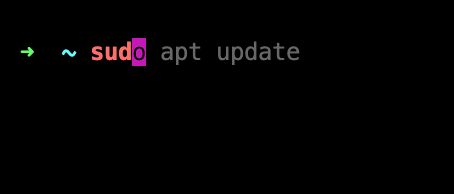Zsh + Oh my zsh
Desde que mac lo agregó por defecto, ya me he acostumbrado a usarlo y con la extensión de omz encuentro que es muy útil para cualquier dev que use habitualmente la consola, por lo que enseñaré como configurarlo.
Instalando zsh
Para instalar:
sudo apt update
sudo apt install zshSi te pregunta por opciones de instalación escoge que se llene con la configuración por defecto.
You can:
(q) Quit and do nothing. The function will be run again next time.
(0) Exit, creating the file ~/.zshrc containing just a comment.
That will prevent this function being run again.
(1) Continue to the main menu.
(2) Populate your ~/.zshrc with the configuration recommended
by the system administrator and exit (you will need to edit
the file by hand, if so desired).
--- Type one of the keys in parentheses ---Acá corresponde a la opción (2), con esto se creará un archivo base con zsh.
Para activar zsh cuando iniciemos una terminal, es necesario ejecutar:
sudo chsh $USER -s /bin/zshcon esto ya quedó activado, si quieren confirmar pueden cerrar la terminal y abrir una nueva. En la nueva terminal pueden verificar que todo esté correcto usando:
echo $SHELL Instalación de Oh my zsh
Primero necesitamos asegurarnos de tener curl o wget y git. Para este ejemplo usaremos solo curl:
# Aseguramos las depedencias
sudo apt install git curl -y
# script para instalar
sh -c "$(curl -fsSL https://raw.githubusercontent.com/ohmyzsh/ohmyzsh/master/tools/install.sh)"Puedes revisar en la página oficial, que el script esté actualizado:

Plugins para omz
Hay 3 plugins que encuentro que si o si deberias tener:
- zsh-syntax-highlighting: Revisa la sintaxis a medida que escribes en la terminal, te coloca en rojo si escribes mal un comando.
- zsh-autosuggestions: Te sugiere comando usados anteriormente cuando vas escribiendo
- zsh-completions: Agrega recomendaciones de comandos adicionales.
Para instalarlos, es necesario ejecutar:
git clone https://github.com/zsh-users/zsh-autosuggestions ${ZSH_CUSTOM:-~/.oh-my-zsh/custom}/plugins/zsh-autosuggestions
git clone https://github.com/zsh-users/zsh-syntax-highlighting.git ${ZSH_CUSTOM:-~/.oh-my-zsh/custom}/plugins/zsh-syntax-highlighting
git clone https://github.com/zsh-users/zsh-completions ${ZSH_CUSTOM:=~/.oh-my-zsh/custom}/plugins/zsh-completionsPara activar el plugin editamos el ~/.zshrc
# reemplazamos esto: plugins=(git) por VVV
plugins=(git zsh-autosuggestions zsh-syntax-highlighting zsh-completions)
autoload -U compinit && compinitPara cargar los cambios en la terminal actual
source ~/.zshrcSi todo está correcto en la terminal ya deberíamos empezar a ver colores y comandos a medida que empecemos a escribir:

